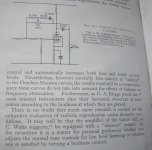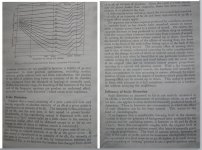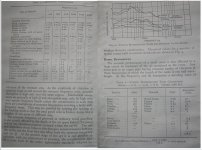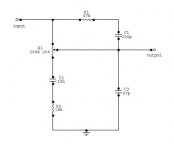I thought,
It would be interesting if people could add links or circuits for Loudness controls for tube circuits..I noticed some people still use them..
I guess it would be interesting for comments as to the the use<<or are they worth using??
If they are worth using which topology is the preferred and why?? (Passive, active, tapped volume,)
Regards
M. Gregg
It would be interesting if people could add links or circuits for Loudness controls for tube circuits..I noticed some people still use them..
I guess it would be interesting for comments as to the the use<<or are they worth using??
If they are worth using which topology is the preferred and why?? (Passive, active, tapped volume,)
Regards
M. Gregg
Attachments
Last edited:
I lost my loudness control when the volume control pot wore out on my dynakit PAS2 preamp. I liked the loudness function fine. I had a **** of a time finding a 250 k log stereo pot, much less one with a loudness section, too. I modded a disco mixer to replace the preamp before I found a pot. The replacement pot I got from stereo cost cutters in 1980 was a dynaco reject, the shaft was too tight. It had to be turned by vice-grip pliers. Bet this new pot doesn't last 19 years, either. Mil-spec copy analog parts are as dead as the dodo bird. I was laughing all through college in the seventies, everybody in the dorm had these import receivers that the volume and tone controls were bad in the second or third year. My best friend's Heathkit developed the same problem. Meanwhile the dynaco ST35's in the college library listening rooms just plowed on, impervious to constant use. I was lucky to find a used set in 1970, just needed new e-caps and rectifier tubes.
Last edited:
Hello All,
Heaven forbid line level equalization controls.
In the old days it was built into my PAS 2. Then we read about the “recommended” mods that removed the tone controls and loudness controls.
Now I am scratching my head over baffle step correction for my home brew speakers. In the old days this is when I would kick in the loudness control on the Pas 2.
Decision made, I am pulling the original old PAS 2 off the shelf to recall what tone and loudness controls are about.
All for Fun
DT
Heaven forbid line level equalization controls.
In the old days it was built into my PAS 2. Then we read about the “recommended” mods that removed the tone controls and loudness controls.
Now I am scratching my head over baffle step correction for my home brew speakers. In the old days this is when I would kick in the loudness control on the Pas 2.
Decision made, I am pulling the original old PAS 2 off the shelf to recall what tone and loudness controls are about.
All for Fun
DT
I have a bunch of piher 50x2 with "bass tap" you can have if you want.
Wasn´t it called hearing compensated volume control or something like that ?
An externally hosted image should be here but it was not working when we last tested it.
Wasn´t it called hearing compensated volume control or something like that ?
The Yamaha Natural Sound series solid-state amplifiers had a separate loudness control next to the volume. One set the volume to comfortable levels, then used the loudness knob to reduce the sound without losing the lows and highs. Can't think why this circuit could not be used with a valve circuit. Also, it does not require a tapped-track potentiometer.
old thread, but here I am looking at it. I too have been on a quest to make this happen for some time. My old MAC1700 (R.I.P.) had a control like the yamaha that is mentioned. It worked fine if I recall, but I was young and ignorant, and may have been doing it wrong. A few of the early McIntosh tube preamps had similar controls. This seems like the best all around method of achieving loudness control without resorting to unobtainium parts.
hello anchorman, the ****** circuit used a 2 gang 200K linear pot, 2x 10nF, 2x 330pF and 2x 47p caps, 2x 47k and 2x 18k resistors. I will be including it in my future valve pre-amp in lieu of tone controls. Here is the schematic - the circuit is for one channel only. For stereo the other channel is a duplicate of this one.
Attachments
In original German radio receivers loudness control was used to extend bass response on low loudness boosting up to 12 dB/Oct on frequencies below Fs of speakers, to get "big sound" from small boxes. To do that, potentiometers had 2 taps. Later for marketing purposes was invented correspondence to F-M curves, similarly to "Oxygen-Free Cables". If you speakers are good enough, you do not need it.
I’ve always found that loudness controls make a system sound “thin” as the volume control is turned up. Most speakers just don’t play loud enough for the F-M curves to flatten out. I have some that do, but they don’t fit in the house. It ends up sounding more natural if you just get used to listening to it set flat - all the time. 100dB of average SPL takes a lot of peak power, typically enough to make most domestic speakers hit the stops or at least drive into noticeable distortion so you’re usually way below that.
IMPORTANT INFORMATION FROM SOMEONE WHO DID THE THINKING
To make an adequate loudness circuit it needs to have more dials than what ive seen on any comercial products.
You need to have a dial that controls the amount of bass and treble added to the signal -possibly two.
This will allow to adjust the amount of compensation needed to provide a credible reproduction of the recorded material in any sizes of rooms and to compensate for the difference in volumelevel between different recordings.
I guess heavily compressed music needs less compensation, but thats another topic I feel.
You need a dial that controls at what volume the gradial loudness will zero out. That will be the volume where your ears no longer needs the compensation of treble and bass. It has to do with our ears varying sensitivity throughout the frequenzyspektrum, and the fact that all speakers do not have the same efficianzy.
If you have a system that is designed to a specific speaker set up in a specific room you could substitude the dials with fixed values if it werent for the variing loudnesslevel between recording.
Ive done the thinking based on knowledge that others have provided. I havnt confirmed them with scientific tests. Please correct me if I omited something. Im not so focused while writing this, but I think its important. My listening devises doesnt have loadness circuits, but iI miss it from my earlier and much cheaper amplifiers.
Cheers!
To make an adequate loudness circuit it needs to have more dials than what ive seen on any comercial products.
You need to have a dial that controls the amount of bass and treble added to the signal -possibly two.
This will allow to adjust the amount of compensation needed to provide a credible reproduction of the recorded material in any sizes of rooms and to compensate for the difference in volumelevel between different recordings.
I guess heavily compressed music needs less compensation, but thats another topic I feel.
You need a dial that controls at what volume the gradial loudness will zero out. That will be the volume where your ears no longer needs the compensation of treble and bass. It has to do with our ears varying sensitivity throughout the frequenzyspektrum, and the fact that all speakers do not have the same efficianzy.
If you have a system that is designed to a specific speaker set up in a specific room you could substitude the dials with fixed values if it werent for the variing loudnesslevel between recording.
Ive done the thinking based on knowledge that others have provided. I havnt confirmed them with scientific tests. Please correct me if I omited something. Im not so focused while writing this, but I think its important. My listening devises doesnt have loadness circuits, but iI miss it from my earlier and much cheaper amplifiers.
Cheers!
One has to admit that loudness correction using only one tap on a volume control is far from ideal, but the fact that an improvement is not perfect, does not necessarily make it undesirable (though some might feel that it does more harm than good.) But as said earlier by other members, such a device is volume related; so for which loudness was it designed?
Then to really get it inaudibly close to reality one requires three volume control taps - at the low volume end some 24dB/octave slope is required (everything else excluded) at 100 Hz. For a higher class amplifier I use an Elma 24-position make-before-break stop-less rotary switch as volume control (that gives 47 loudness steps, giving one ample scope for an accurate loudness feature..) Performance is easily checked with Spice. (I do-not find h.f. equalisation correction necessary.) Spending a little more on such an arrangement also insures a long-lasting control.
Of the several amplifiers I built I have not found anybody not preferring it, (even with a more limited two-tap potentiometer).
Then to really get it inaudibly close to reality one requires three volume control taps - at the low volume end some 24dB/octave slope is required (everything else excluded) at 100 Hz. For a higher class amplifier I use an Elma 24-position make-before-break stop-less rotary switch as volume control (that gives 47 loudness steps, giving one ample scope for an accurate loudness feature..) Performance is easily checked with Spice. (I do-not find h.f. equalisation correction necessary.) Spending a little more on such an arrangement also insures a long-lasting control.
Of the several amplifiers I built I have not found anybody not preferring it, (even with a more limited two-tap potentiometer).
- Status
- This old topic is closed. If you want to reopen this topic, contact a moderator using the "Report Post" button.
- Home
- Amplifiers
- Tubes / Valves
- Loudness controls



